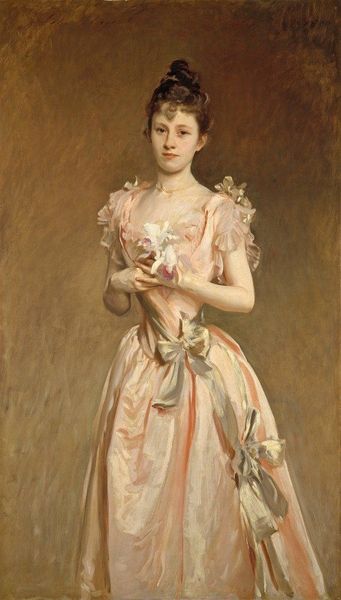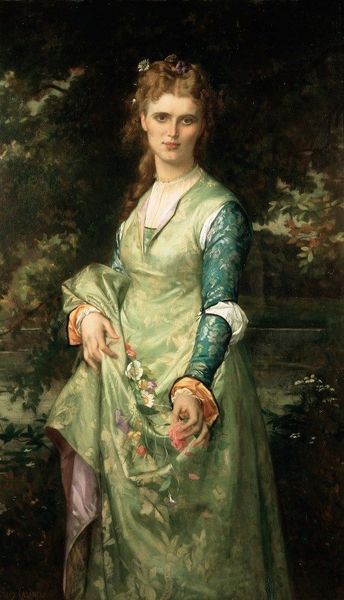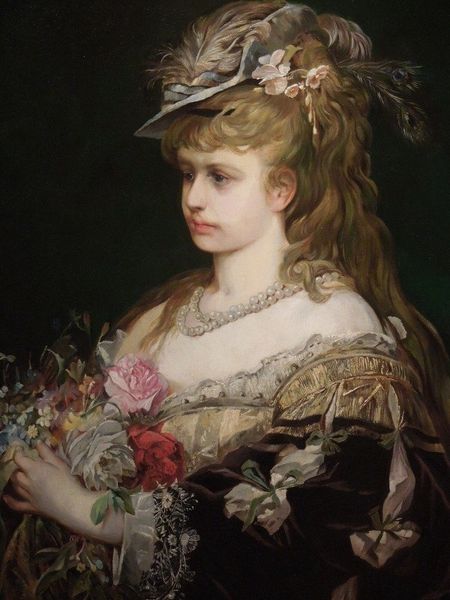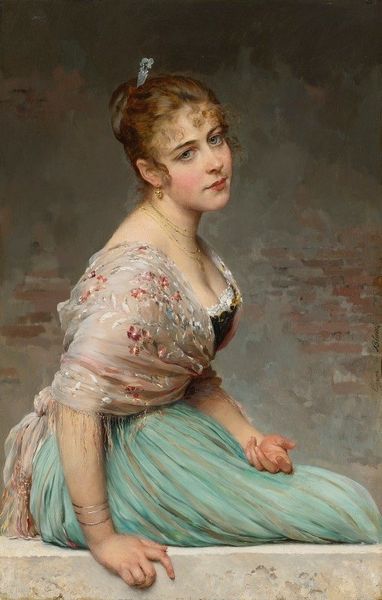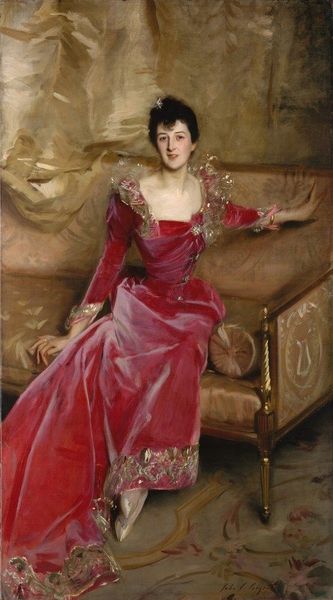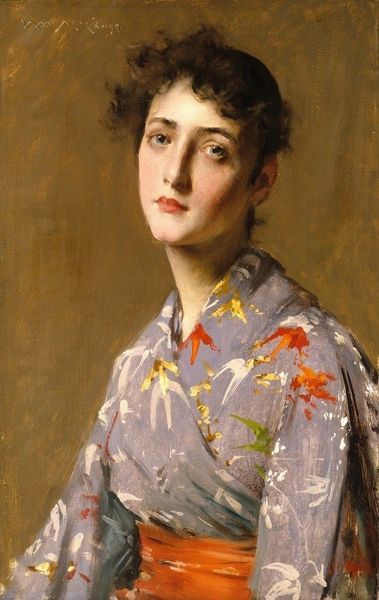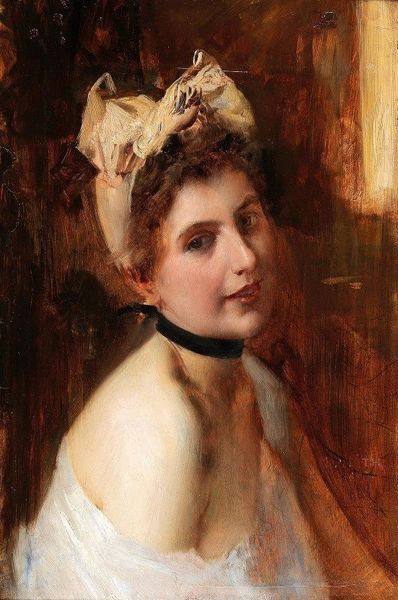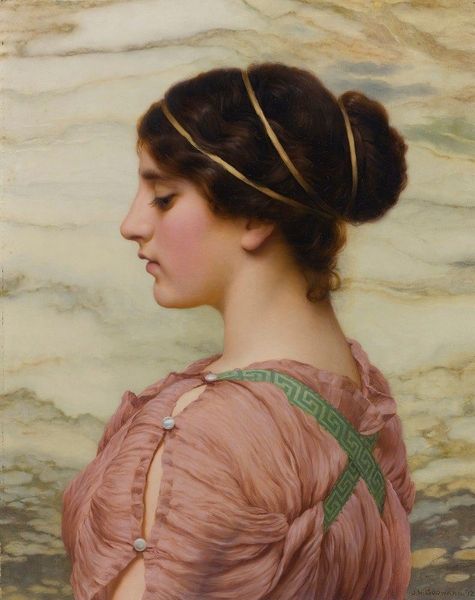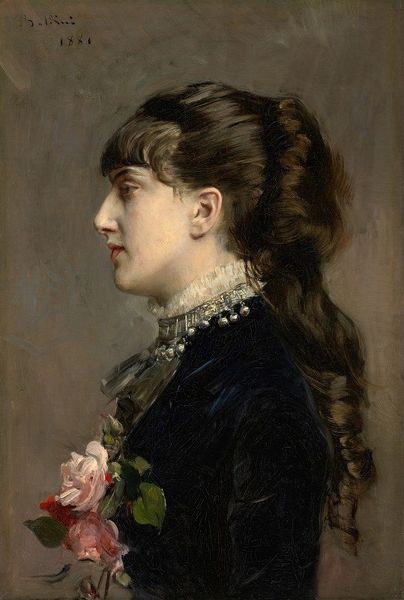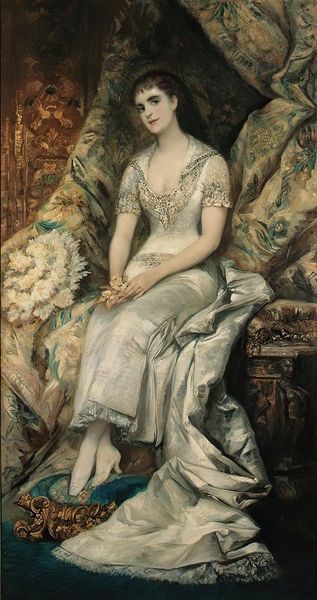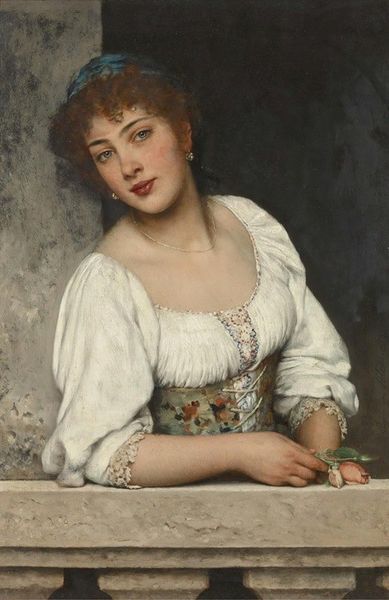
painting
#
portrait
#
figurative
#
painting
#
genre-painting
#
academic-art
#
realism
Copyright: Public Domain: Artvee
Editor: Here we have "A Lady In A Golden Gown," a painting by Gustave Jean Jacquet. I’m really drawn to the texture of the dress; it looks almost iridescent. What strikes you when you look at this painting? Curator: Initially, the formal qualities command attention. Note how Jacquet uses the chiaroscuro technique – the sharp contrast between light and dark – to sculpt the figure. Observe, too, the subtle tension between the decorative floral pattern on the gown and the restrained expression of the sitter. How do these elements contribute to the painting's overall aesthetic effect? Editor: So you’re saying it’s less about who she is and more about how Jacquet presents her using light and texture? Curator: Precisely. Consider the composition as a series of interlocking shapes and lines. The soft curves of her face are echoed in the folds of the dress, while the vertical lines of her neckline create a sense of formality. Ask yourself, how do these visual elements work together to create a harmonious whole? The arrangement generates an overall aesthetic experience that transcends mere representation. Editor: I hadn't really thought about it that way before, breaking it down into shapes. Now I see how the artist really thought about how it all fits together on the canvas. Curator: Indeed. By focusing on the formal properties of the artwork, we gain insights into the artist's intentions and the painting's intrinsic aesthetic value, wouldn't you agree? Editor: Absolutely! Thinking about the interplay of shapes and light gives me a new appreciation for the artist’s skill. Curator: And that, in essence, is the essence of formalism: unlocking meaning through a rigorous examination of the artwork's formal elements.
Comments
No comments
Be the first to comment and join the conversation on the ultimate creative platform.
